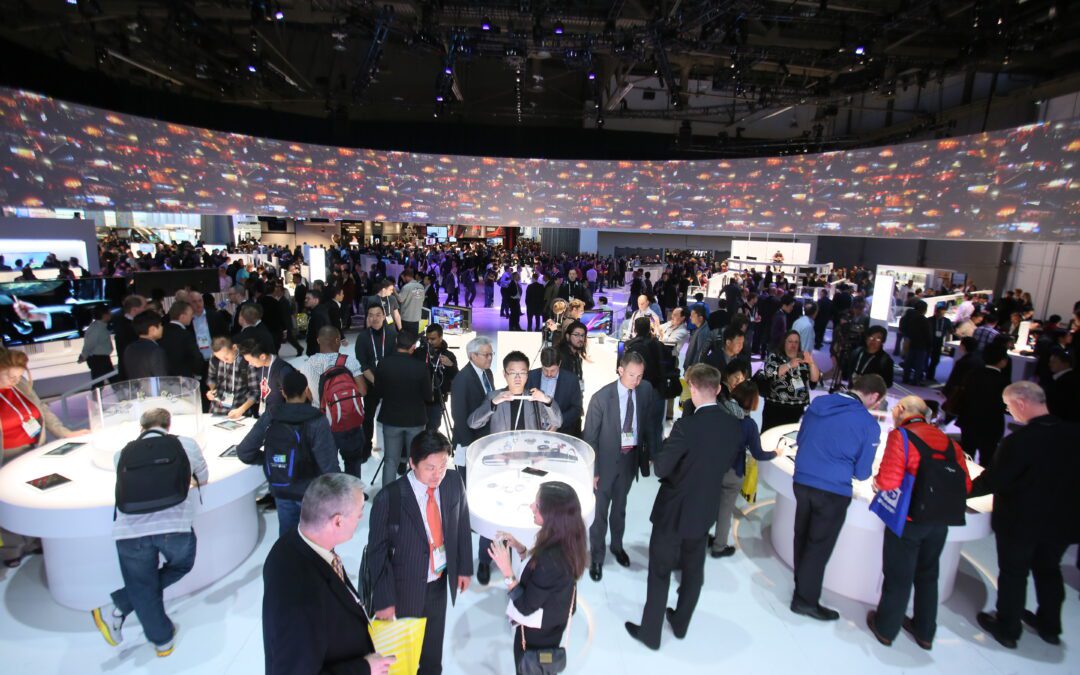We all read the headlines: ‘CES 2015 is the year of the Internet of Things’ Actually, it was the year of [more] connected things.
IoT doesn’t need more iterations of connected things, what it requires for realization is more focus on the Internet; the connectivity between things.
What CES 2015 indicates about IoT in 2015 is we’re still wading through a sea of things; still too distracted by the bright shininess (and boy are they bright and shiny!) of connected objects to see the real power of connecting those objects.
I must say that I was unable to attend CES 2015 this year, so what follows is not my first hand account, but a second hand analysis what I have read, seen, and discussed with industry peers.
More Wearable Things
Wearable redundancy, anyone? Those who shopped for a fitness tracker over the holidays quickly found the task an annoying one. Why? Because there are literally hundreds of wearables on the market today, with dozens and dozens proliferating in each vertical (e.g. fitness, entertainment, etc.) CES promised us no end in sight to this gratuitous plethora— a plethora we were already aware of before CES.
Show me something new; not another jacked up pedometer. Show me a fitness tracker that goes beyond counting and tells me how to actually change my behaviors. How about one that truly transcends the fitness domain; one more horizontal (like we’re accustomed to with smartphones)? Gesture control, information security, identity authentication, contextual/proximate sensitivity, augmented reality—all opportunities for wearables to gain wider (less industry-specific) appeal.
Speaking of mass adoption, how about something we’d actually want to wear? As fashion and tech court each other, we’re witnessing the awkward missteps—a lot of them. If it’s wearable, techies want to make it smart; if it’s smart, the rest of us just want something that can pass as actually wearable, no fashionable.
More Things… Just Because.
IoT is in the age of ‘just because.’ Just because we can now add sensors to everything, doesn’t necessarily mean we should. CES brought us numerous head-scratching connected objects, such as connected flowerpots, ‘smart’ belts that loosen after a big meal, smart baby bottles, Bluetooth connected tape measures, and even smart rubber duckies, which begs the question: ‘really?’ Sure it’s exciting to be able to connect things to the Internet and control them from our smartphones. But we’ll see maturity beyond this phase only when we’re free from needing a smartphone to derive value from connected objects.
More Intelligent Things
While CES 2015 brought us scores of redundant and perhaps ridiculous connected things, we’d be remiss to think that was it. Scouring best-of lists, it’s not hard to find a few exceptional, eyebrow raising products that could be catalysts to greater IoT understanding and adoption. The theme? Actually solving a problem intelligently. Three honorable mentions:
- Gotenna, a hand-held antenna that enables connectivity anywhere in the world, when there is no phone or Internet service.
- Energous WattUp, a wifi router that doubles as a charger for all devices.
- Nymi, a wristband for identity authentication using your unique heartbeat to unlock devices, car, home, and set preferences.
Whirlpool unveiled a connected washer/dryer that bring more depth to the term ‘smart.’ The appliance is integrated with the Nest thermostat and if set to ‘Away,’ the machine’s Ecoboost option switches to slightly longer drying times at lower temperatures to conserve energy. Its ‘Automatic Load Size Sensing’ uses water level sensors to detect load size and automatically adjust to water usage, saving resources. If and when an issue occurs, the machine itself hosts a diagnostics tool that provides easy how-to guides to help resolve common user errors. Finally, Whirlpool has partnered with Habitat for Humanity to allow users to convert each load of laundry into a donation through its Connect to Care program. Efficiency, customization, self-service, even charity; now we’re getting smarter.
From Things to Connections
CES 2015 showed us that the industry is still fixated on the Things, instead of the Internet of those things. Innovation around standards, security, data privacy, data sharing, and numerous other critical concerns of IoT were largely absent, or extremely niche. With one notable exception: AllJoyn’s Gateway Agent.
An industry first, what this means is that we can now take just about any of these disparate ‘things’ (objects or applications) that happen to be Wi-fi or Bluetooth enabled– speakers, cars, phones, garage doors, TVs, thermostats, etc.– and connect them to a manageable, secure, remotely accessible, and standardized system. The buzz of this announcement paled in comparison to the onslaught of headlines we saw around smart TV’s, virtual reality, 3-D printing, and wearables, yet as one journalist wrote, “that’s a pity because [it] may be the most important one of the show.”
Perhaps in 2015, we’ll settle down, focus less on bright shiny things and more on connecting with what matters.
—
This piece was originally published on Altimeter Group’s website and can be found here.


